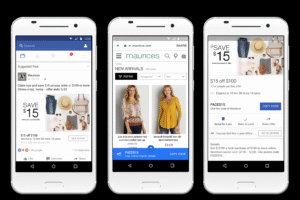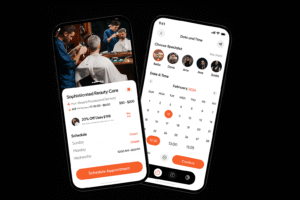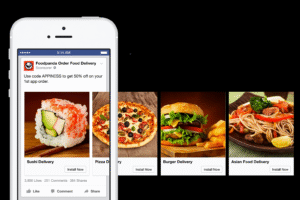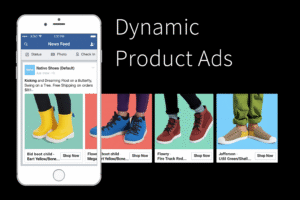Discover how to use data analytics to improve your marketing ROI. Learn which metrics matter, tools to use, and how to turn insights into profit. 💡📈
Introduction: Why Data-Driven Marketing Wins in 2025 🎯
In today’s digital-first world, gut feelings aren’t enough. If you want to maximize your marketing ROI (Return on Investment), you need one thing: data analytics.
💥 Data analytics helps marketers:
Understand customer behavior
Optimize campaign performance
Cut wasted spend
Make smarter, faster decisions
Let’s dive into how to use data analytics to supercharge your marketing strategy and turn every dollar into measurable growth.
What Is Marketing ROI (and Why It Matters)? 💸
Marketing ROI is a metric that shows how much revenue your marketing efforts generate compared to how much you spent.
🧮 Formula:
Marketing ROI = (Revenue from Marketing – Marketing Costs) / Marketing Costs × 100
The higher the ROI, the more effective your marketing. But without data analytics, you’re just guessing.
What Is Data Analytics in Marketing? 🔍
Data analytics in marketing involves collecting, measuring, and analyzing data from various channels to understand performance and optimize results.
This includes:
Traffic sources
Engagement metrics
Conversion rates
Customer lifetime value (CLV)
Channel-specific performance (SEO, email, PPC, etc.)
Benefits of Using Data Analytics in Marketing ✅
Optimizes Campaigns in Real-Time
Improves Targeting & Segmentation
Reduces Customer Acquisition Cost (CAC)
Increases Customer Retention
Maximizes Content & Ad Spend Efficiency
Predicts Trends and Buyer Behavior
Key Marketing Metrics to Track 📊
To truly improve ROI, focus on the right metrics.
🧠 Awareness Stage:
Impressions
Bounce Rate
Click-Through Rate (CTR)
🎯 Consideration Stage:
Session Duration
Page Depth
Lead Generation Rate
💳 Conversion Stage:
Conversion Rate
Cost Per Lead (CPL)
Cost Per Acquisition (CPA)
Return on Ad Spend (ROAS)
🔁 Retention & Loyalty Stage:
Repeat Purchase Rate
Customer Lifetime Value (CLV)
Net Promoter Score (NPS)
Churn Rate
How to Use Data Analytics to Boost Marketing ROI 🚀
1. Set Clear Goals & KPIs
Before you can optimize, you need clarity.
✅ Example Goals:
Increase ROI from Facebook Ads by 30%
Reduce cost per lead to under $15
Improve email CTR by 20% this quarter
Use SMART goals and align your analytics tracking setup accordingly.
2. Use the Right Tools 🛠️
The best insights come from combining multiple tools. Here’s what you need:
| Tool Type | Popular Options |
|---|---|
| Web Analytics | Google Analytics 4, Hotjar, Matomo |
| Marketing Automation | HubSpot, ActiveCampaign, Mailchimp |
| SEO Analytics | Ahrefs, SEMrush, Google Search Console |
| Social Media Analytics | Sprout Social, Hootsuite, Buffer |
| CRM + Sales Tracking | Salesforce, Zoho, Pipedrive |
| Business Intelligence | Looker, Tableau, Power BI |
3. Track User Journeys Across Channels
Use UTM parameters and tools like GA4 to map:
Where traffic is coming from
Which channels bring the highest-value leads
Which touchpoints lead to conversions
👣 This gives you a bird’s eye view of how users interact with your brand before buying.
4. Segment Your Audience for Deeper Insights
One-size-fits-all reporting hides gold.
📌 Segment data by:
Demographics (age, gender, location)
Behavior (pages viewed, time on site)
Source (organic, paid, social, referral)
Funnel stage (awareness, consideration, decision)
This helps tailor messaging, offers, and retargeting.
5. A/B Test Everything
From subject lines to landing pages—test, don’t guess.
✅ A/B Testing Ideas:
Email copy vs. design
CTA color and placement
Ad headline variations
Pricing displays
Track conversion rates and use analytics to pick winners.
6. Attribute Conversions Accurately
Multi-touch attribution models help you assign credit to all the touchpoints a user interacted with before converting—not just the last one.
Common models:
First Click
Last Click
Linear
Time Decay
Data-Driven Attribution (GA4 default)
This ensures you’re investing in the right channels.
7. Predictive Analytics for Smarter Decisions 🤖
AI-powered analytics tools like Google Cloud AI, Salesforce Einstein, and ChatGPT-integrated dashboards can:
Forecast trends
Predict customer churn
Identify best times to send emails or publish posts
Get ahead of your competitors with proactive insights.
8. Optimize Campaigns in Real-Time
Instead of “set and forget,” use dashboards to:
Pause underperforming ads
Reallocate budget dynamically
Double down on high-performing content
Real-time adjustments save money and boost ROI.
Case Study: How Data Analytics Increased ROI by 3x 📈
Client: E-commerce brand selling eco-friendly skincare
Problem: High ad spend, low return
Solution:
Implemented GA4 for detailed conversion paths
Used Hotjar to analyze cart abandonment
Ran A/B tests on checkout page and ad copy
Shifted ad budget from underperforming channels to Google Shopping
Result:
🚀 ROI jumped from 150% to 450% within 90 days
Common Mistakes to Avoid ❌
Tracking too many metrics without purpose
Ignoring customer feedback data
Focusing only on vanity metrics (likes, impressions)
Not syncing marketing data with sales outcomes
Delayed data reporting or analysis
FAQs About Using Data Analytics in Marketing 🧠
❓ What is the most important data for improving marketing ROI?
A: Focus on data tied to conversions, cost per acquisition, and customer lifetime value. These directly affect your bottom line.
❓ Can small businesses use data analytics effectively?
A: Absolutely! Tools like Google Analytics, Mailchimp, and HubSpot offer free or low-cost options perfect for SMBs.
❓ How often should I review my analytics?
A: Weekly for tactical decisions, monthly for strategy, and quarterly for budgeting and ROI analysis.
❓ What’s the difference between data analytics and business intelligence?
A: Analytics helps optimize day-to-day marketing; business intelligence focuses on big-picture trends and strategic decisions.
❓ Is AI necessary for marketing analytics?
A: Not required, but AI tools offer predictive insights and automation that can significantly improve ROI and save time.
Final Thoughts: From Data to Dollars 💼
In 2025, successful marketers aren’t just creative—they’re data-driven decision-makers.
With the right tools, goals, and strategy, data analytics helps you:
Eliminate waste
Focus on what works
Multiply your marketing returns
Start small. Measure what matters. And use your data to make every click count. 📈🚀














